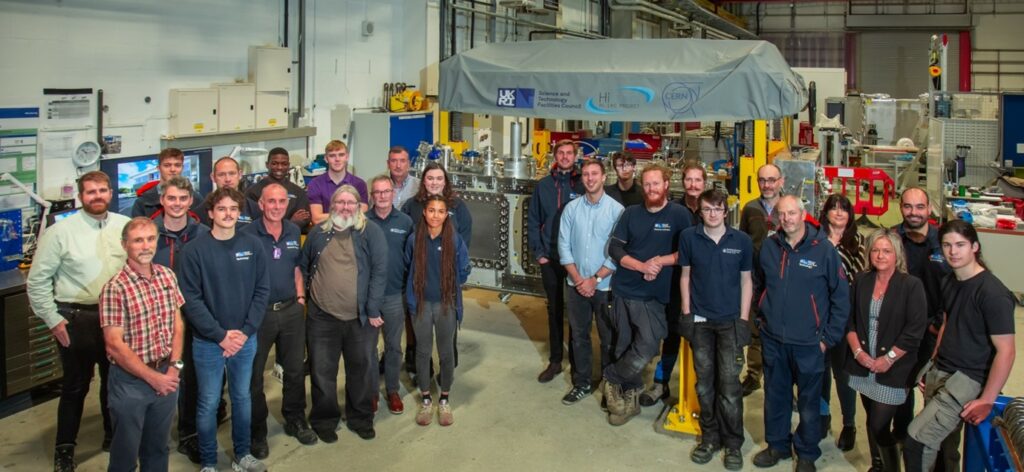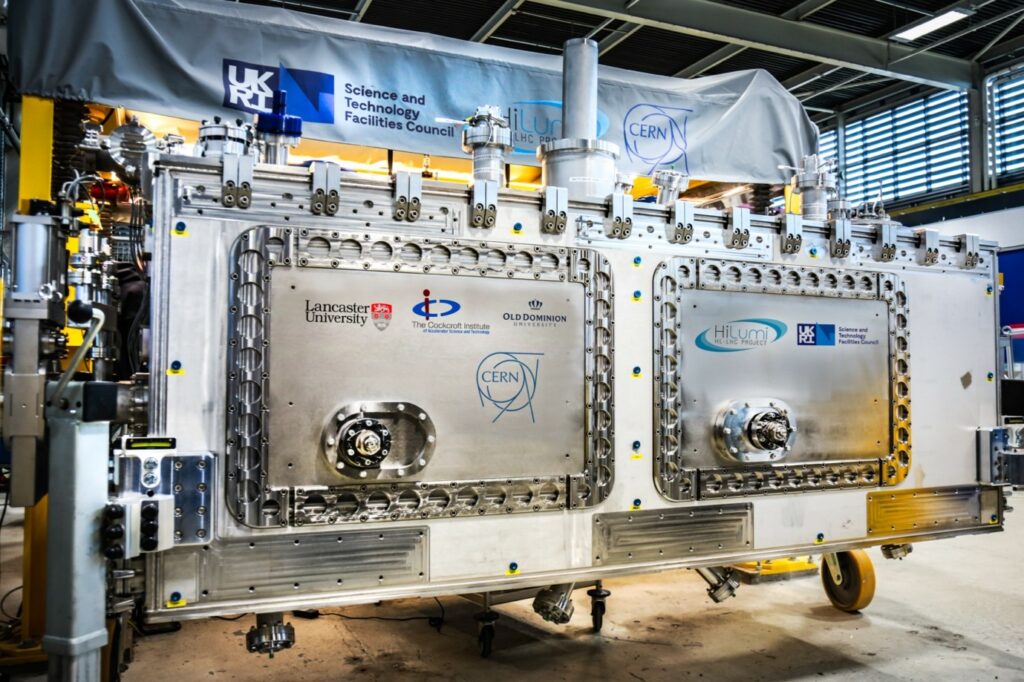The Large Hadron Collider (LHC) is one of the largest scientific experiments ever built. Over the last 13 years, the LHC has opened up a new frontier of discovery in fundamental particle physics, providing experimental data for a global user community of over 9,000 scientists. To further increase its discovery potential, a major upgrade of the LHC will be undertaken in the 2020s to increase its instantaneous luminosity (rate of collisions) by a factor of five beyond the original design value and the integrated luminosity (total number of collisions) by a factor of ten.
This upgrade, known as the High Luminosity LHC (HL-LHC), will rely on a number of key innovations that push accelerator technology well beyond its present limits. Among these are compact superconducting “crab” cavities which will rotate the proton bunches to provide head-on collisions in the two largest detectors: ATLAS and CMS. The UK has been a key partner in the development of compact crab cavities for HL-LHC since 2011.
“Crab cavities allow bunches to be fully aligned at collision, providing much more collisions, but LHC will be the first to operate them with a proton beam. Significant R&D is required to ensure it will work without issues when installed, so providing CERN with prototypes is essential.” said Prof Graeme Burt, HL-LHC-UK project manager and Professor at Lancaster University.
Operating at 2 K (2 degrees above absolute zero), these cavities are housed in complex, state-of-the-art modules (called cryomodules) which provides precise alignment, mechanical support, cryogenic cooling, thermal and magnetic shielding, tuning capability, vacuum isolation, radio frequency power, monitoring of key parameters, and all other connections to the outside world.

“The state-of-the-art cryomodule is the first of its kind and a huge coup for the UK team to have built. After making several design contributions to the cryomodule including the thermal screen, cold and warm magnetic shields, the engineering team developed and delivered a suite assembly infrastructure and tooling for the build. The team also delivered over 900 pages of detailed procedures which form the build quality assurance. Every step from cleanroom assembly to welding, cryostating and testing had to developed and approved before execution. The team overcame many complex challenges which developed and demonstrated their multi-disciplinary skillsets and commitment. Truly great work!” said Niklas Templeton, Technical Manager for the cryomodule build and Project & Mechanical Engineer in STFC’s Technology Department.
A team at the Daresbury Laboratory made up of staff from the Cockcroft Institute and STFC (Accelerator Science and Technology Centre (ASTeC) and Technology Department (TD)) have successfully delivered the first prototype of these cryomodules that utilises the Radio Frequency Dipole (RFD) cavity design designed by a team at Old Dominion University in the US and developed by a team at CERN. The cryomodule has taken almost two years of assembly work at Daresbury and contains around 10,000 components, of which over 5,000 are unique. The team at Daresbury have built upon existing expertise in mechanical and rf engineering, cryogenics, instrumentation and controls, vacuum science, survey and alignment, welding, and project management. This exceptionally challenging project has also supported significant upskilling of staff with support for CERN, and the building of substantial new infrastructure for cryomodule assembly at Daresbury which will be used in future projects.

“I’m incredibly proud of what the team have accomplished over the last two years” said Dr Andrew Blackett-May, Senior Cryogenics Engineer in ASTeC and Task Manager for the cryomodule build. “We have faced myriad technical and logistical challenges getting to the point of successfully delivering the RFD cryomodule to CERN and huge credit is due to everyone involved for working so effectively as a team and delivering their work to such a consistently high standard. This really is a fantastic achievement for us at Daresbury Laboratory, as well as for UKRI-STFC and for UK science and engineering more widely on this world-class project. We’ll be continuing to work very closely with our colleagues at CERN as they undertake the SM18 and SPS tests, and we look forward to sharing further news from these in due over the coming months.” Following the success of this first phase of the project, the team at Daresbury are moving on to Phase 2 which will see the delivery of a further four cryomodules to be installed in LHC, this time using a Double Quarter Wave (DQW) cavity designed by colleagues from Brookhaven National Laboratory in the US and developed at CERN. The RFD prototype cryomodule will be installed in the Super Proton Synchrotron at CERN to understand its behaviour when operating on proton beams.
